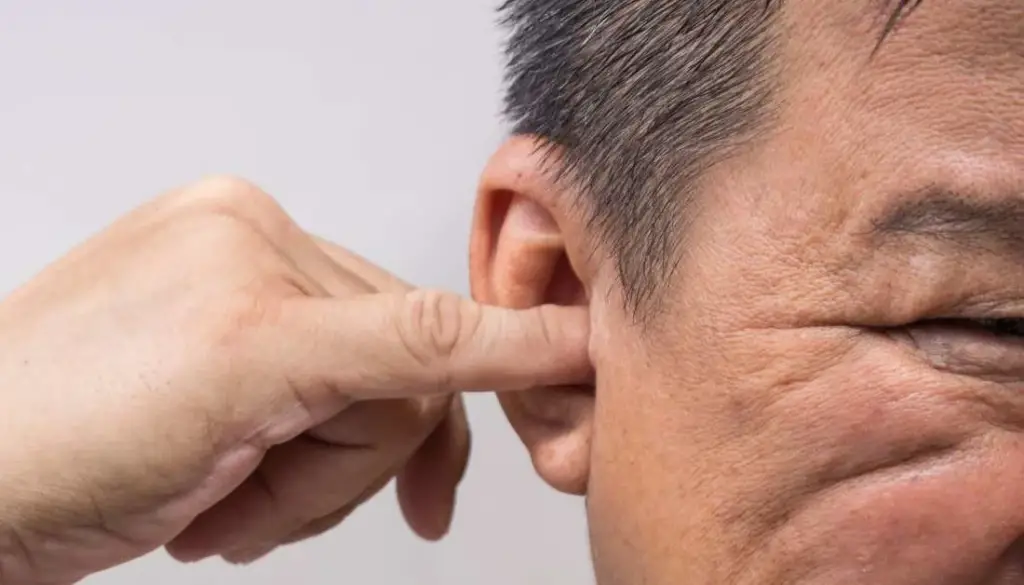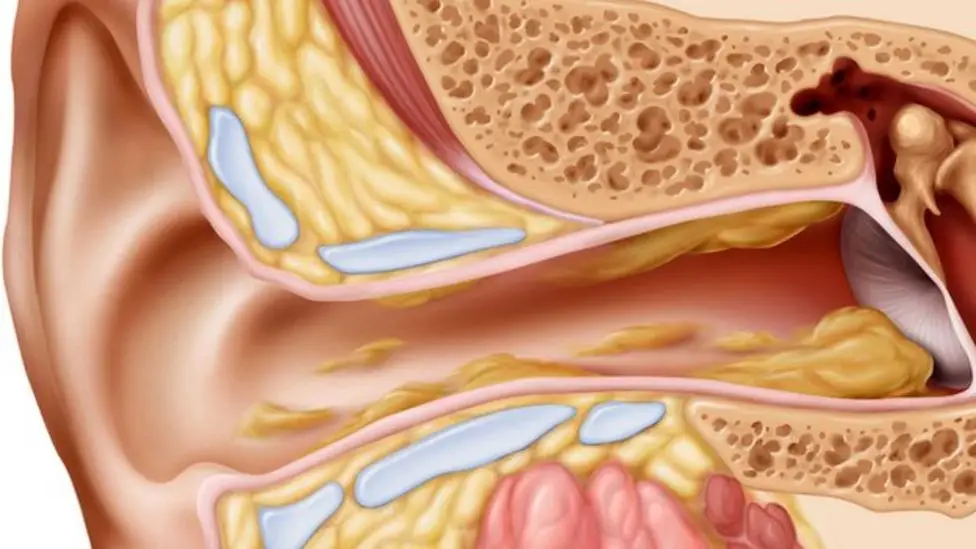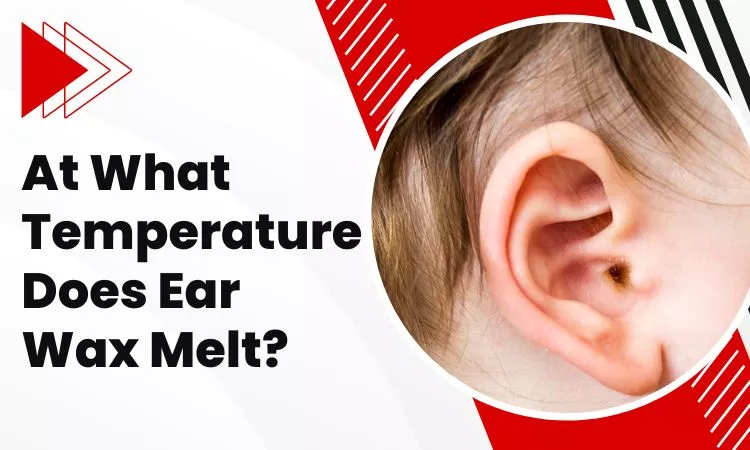Ear wax can be a real pain. A common way of cleaning the ears is by melting the ear wax.
But, at what temperature does ear wax melt?
Ear wax usually melts at 35°-40° Celsius or 95°-104° Fahrenheit. So, it can melt away when you have a strong fever. But if you want to melt ear wax by using an outside heat source, you’ll need at least 120° Fahrenheit. This temperature can be dangerous to your ear. That’s why it is not recommended to try melting it using an outside heat source.
In the next sections, we will try to explain more about cleaning ear waxes.
At What Temperature Does Ear Wax Melt?

Earwax, also known as cerumen, has a melting point of around 40 degrees Celsius or 104 degrees Fahrenheit.
At this temperature, earwax can soften and become more malleable. This makes it easier to remove or clean it from the ear canal. Since ear wax is not like candle wax, it would not melt but rather it would soften up.
But attempting to melt earwax with external heat sources is not recommended. That’s because it can cause injury or damage to the ear. It is best to seek the advice of an ear wax removal specialist for earwax management.
Does Ear Wax Melt With Fever?
Yes, earwax can melt with a high fever. When a person, especially a child, has a fever, it can cause the earwax to soften and melt. You may experience this even if you aren’t sick but are simply hot.
Does Warm Water Melt Ear Wax?
Yes, warm water can be effective in helping to loosen earwax. A few drops of warm water at body temperature can help dissolve and loosen stubborn wax.
This can be as simple as using warm water during a shower. Or, you can gently apply a few drops of warm water into the ear canal.
However, this method should not be accompanied by poking or prodding. That’s because it can have the opposite effect. Poking or prodding may push the wax deeper into the ear.
So, when it comes to dealing with earwax, a gentle approach with warm water can be a helpful remedy.
Does Earwax Melt At Night?
No, earwax does not specifically melt at night. The wet feeling you may experience inside your ear is not due to the earwax melting on its own.
Instead, it is often a result of increased wax production by the ceruminous glands in the ear canal. The glands can become more active, leading to a buildup of wax, which can give a wet or moist sensation.
Can You Melt Ear Wax With A Heating Pad?
You can melt ear wax with a heating pad. But it is not recommended to use this method to try to melt earwax.
The wax usually is deep within the ear canal and not easily affected by external heat sources. For the wax to become runny and drain out, it must be heated to 120 degrees Fahrenheit.
This much heat could potentially cause harm to the eardrum and the surrounding tissues.
Moreover, attempting to heat the ear canal can lead to overheating of the middle ear. This can in turn affect the inner ear structures and result in vertigo and vomiting.

Can A Hair Dryer Melt Ear Wax?
No, you cannot melt ear wax using a hair dryer. But you can use it to dry your ear after using other safe methods for unblocking your ear.
As we’ve said before, using an external heat source like a hair dryer or a heating pad is not recommended. That’s because the temperature needed to soften the wax can damage your ear.
How to Remove Ear Wax Blockage Fast and Safely?
Here are some safe and fast methods for unblocking your ears without melting ear wax.
Method One: Use Ear Drops
To safely unblock your ears, you can use over-the-counter ear cleaning drops that contain hydrogen peroxide or other peroxide solutions. Here’s how-
- Lay sideways and add the drops as directed.
- Let the drops sit in your ear for about five minutes to soften the wax.
- Sit up and have a tissue ready to catch the liquid and loosened earwax as it comes out.
Method Two: Flush Your Ear
If ear cleaning drops don’t work or you have impacted cerumen, flushing with a bulb syringe can be an option. Here’s what you need to do-
- Fill the syringe with warm water and gently squeeze it near your ear opening. You can use oil or baking soda solution instead of warm water too. If you use oil, you need to use warm water to flush the oil out.
- Allow the warm water to flow into your ear to break up the wax. During this Keep your head turned to the side over a sink or bathtub.
- When you are done you can use a hair dryer to dry your ears, which is optional. Make sure to put it on low heat settings. Also, keep it at least 30 cm away.
Precautions:
- Be gentle to avoid harming the eardrum.
- Ensure the water is at a comfortable temperature, neither too cold nor too hot.
- Do not use the flushing method if you have a hole in your eardrum or have had eardrum surgery.
Method Three: Go to An ENT Specialist

If you attempt and fail to clean out your ear at home, it’s better to let a professional handle this. Set up an appointment with a doctor and have him remove the ear wax from your ear.
Tips For Keeping Your Ears Healthy
You know how you can unblock your ear. But do you know how you can prevent clogging in the future? Here are some tips you can follow-
- Avoid poking anything into your ears, as it can damage the delicate ear lining.
- Do not use cotton buds to clean your ears, as they can push wax back inside and cause irritation.
- Clean the visible part of your ear and behind it using a little soap. Rinse with water and dry gently with a towel.
- Avoid immersing your ears in bathwater to prevent the entry of bacteria that could cause infections.
- Consider using a drop of olive oil in each ear once a week to soften earwax and promote natural movement.
- Use earplugs to protect your ears from dust and loud noise.
- Do not ignore ear problems; seek appropriate treatment to prevent potential complications.
Also, if you do decide to clean your ear by yourself, you should practice caution. Or, you may get some ear wax in the eye, which may complicate things.
Frequently Asked Questions (FAQs):
What Happens If Earwax Goes Too Deep?
Untreated ear wax goes too deep and can cause irritation, pain, dizziness, ringing in your ear, etc. It can even cause major hearing loss if you don’t take steps to treat it timely.
Does Chewing Soften Ear Wax?
Yes, chewing can help with the natural movement of ear wax. But it doesn’t necessarily soften the wax itself. The everyday movements of the jaw, including chewing and talking, can contribute to the natural process of ear wax migration.
Does Ear Wax Expand in Water?
Yes, ear wax can expand when it comes into contact with water. Water can absorb moisture and cause ear wax to swell, causing a blockage in the ear canal. This can occur after swimming or showering, where water enters the ear and causes the wax to expand.
Conclusion
So, after this elaborate discussion, you should now know at what temperature does ear wax melt.
Although there are some safe ways to clean your ears, it’s better to just let your ear clean itself. If there is heavy blocking, you should go check with an ear specialist.

